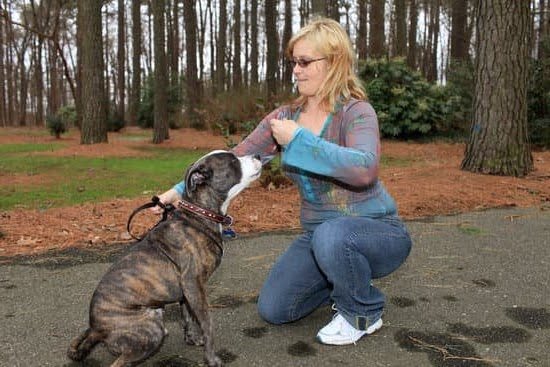Are you considering getting a dog or do you already have one? Understanding the importance of dogs training is essential for both new and experienced pet owners. Training your furry companion not only creates a strong bond between you but also ensures their safety and well-being. In this article, we will explore the basics of dog training, including different methods, essential equipment, basic commands, problem behaviors, advanced techniques, breed-specific training, and the importance of consistency and patience.
When it comes to dogs training, there are various methods to choose from. Positive reinforcement and punishment-based techniques are two common approaches. Understanding these methods will help you decide which one suits your dog’s unique personality and needs. Additionally, having the right equipment such as collars, leashes, clickers, and treats can make the training process more effective.
Basic commands like sit, stay, come, and heel are fundamental for every dog to learn. Furthermore, addressing problem behaviors such as barking, jumping, and aggression is crucial in creating a harmonious relationship between you and your pet.
Finally, we will discuss advanced training techniques including teaching tricks, agility, obedience competitions as well as tailoring training methods for specific breeds. Throughout this journey of learning how to train your dog effectively 98consistency and patience play a vital role in achieving success so we will also provide tips on how owners can stay committed and encourage progress during the training process.
Choosing the Right Training Method for Your Dog
When it comes to dogs training, one of the most important decisions a pet owner must make is choosing the right training method for their dog. Positive reinforcement and punishment-based techniques are the two most common approaches to dog training, each with its own set of advantages and disadvantages.
Positive reinforcement involves rewarding your dog for good behavior with treats, praise, or toys. This method focuses on reinforcing the behaviors you want to see in your dog rather than punishing undesirable behaviors. Research has shown that positive reinforcement is not only more effective in the long run, but it also strengthens the bond between the owner and their pet.
On the other hand, punishment-based techniques involve correcting your dog for bad behavior through physical or verbal punishment. While this approach may yield quicker results in some cases, it can also lead to fear, anxiety, and aggression in dogs. It can also damage the relationship between you and your pet.
It’s important for dog owners to carefully consider which approach aligns best with their values and their dog’s personality. Regardless of the method chosen, consistency and patience are key factors in successful dogs training.
| Training Method | Advantages | Disadvantages |
|---|---|---|
| Positive Reinforcement | Strengthens bond between owner and dog | Requires patience as results may take longer |
| Punishment-Based Techniques | Potentially quicker results in some cases | May result in fear, anxiety, and aggression in dogs |
Essential Dog Training Equipment
When it comes to dogs training, having the right equipment is essential for success. The most basic and important piece of equipment is a collar and leash. Collars are used for identification as well as attachment for leashes. Leashes come in different lengths and styles, but the most common ones are standard 6-foot leashes made of nylon or leather.
Another important tool for dog training is a clicker. A clicker is a small device that makes a clicking sound when pressed. It is commonly used in positive reinforcement training to mark the desired behavior at the exact moment it occurs. Clickers are effective because they create a consistent signal that lets the dog know when they have performed the correct action.
Treats are also an essential part of dog training equipment. They are used as rewards for good behavior and can be particularly useful during initial stages of training when teaching basic commands such as sit, stay, come, and heel. Treats should be small, flavorful, and easy to chew so that they can be consumed quickly without causing distractions during the training process.
| Dog Training Equipment | Description |
|---|---|
| Collar and Leash | Used for identification and control during walks and training sessions. |
| Clicker | A device that makes a clicking sound to mark desired behavior during positive reinforcement training. |
| Treats | Small, flavorful rewards used to reinforce good behavior during training. |
Basic Commands Every Dog Should Learn
Teaching your dog basic commands is essential for their safety and your peace of mind. Whether you have a new puppy or an older dog, it’s never too late to start training. Here are some key commands that every dog should learn:
Sit
Teaching your dog to sit is one of the most basic and important commands. It can be used in various situations, such as when you need your dog to be calm and controlled, before crossing the street, or before being fed. To train your dog to sit, hold a treat close to their nose and slowly move it upwards.
As their head moves up, their bottom will naturally lower. Once they are in the sitting position, say “sit” and give them the treat.
Stay
The “stay” command is crucial for keeping your dog safe in potentially dangerous situations. Start by telling your dog to sit, then hold out your hand and say “stay” while taking a step back. If they stay in place, reward them with a treat and praise. Gradually increase the distance as they become more confident with the command.
Come
The “come” command is vital for getting your dog’s attention and calling them back to you when off-leash. Start by using a long leash in a distraction-free area. Say “come” in a cheerful voice while gently tugging on the leash. When they come to you, reward them with treats and affection. Repeat this process until they respond reliably to the command.
Heel
Teaching your dog to walk nicely on a leash without pulling is important for both their safety and yours. The “heel” command teaches your dog to walk calmly beside you without pulling or straying ahead. Use treats to encourage them to stay by your side and reward them when they do so successfully.
Training these basic commands will create a well-behaved and obedient companion, making daily activities much more enjoyable for both you and your furry friend. Consistency and patience are key when it comes to dogs training – always use positive reinforcement techniques to ensure a happy and willing learner.
Problem Behaviors and How to Address Them
Dogs are wonderful companions, but they can occasionally exhibit problem behaviors that can be frustrating for their owners. Some common problem behaviors include barking, jumping, and aggression. It’s important for dog owners to understand the root causes of these behaviors and how to address them effectively through proper dogs training.
Barking is a natural form of communication for dogs, but excessive barking can be disruptive and annoying. Dogs may bark out of boredom, fear, excitement, or as a response to other animals or people. To address excessive barking, it’s important to first identify the cause and then use positive reinforcement techniques to redirect the behavior. This may involve providing mental stimulation through toys and treats or teaching the “quiet” command through consistent training.
Jumping up on people is another common problem behavior in dogs, particularly when greeting visitors or family members. While this behavior may seem harmless, it can become an issue as dogs get larger or when interacting with individuals who are uncomfortable with such behavior. Training dogs to greet people politely by providing alternative commands like “sit” or “down” can help address this behavior effectively.
Aggression in dogs can manifest in many forms including growling, snapping, biting, and lunging. It’s crucial for dog owners to address aggressive behaviors early on through proper training and socialization. Seeking professional help from a certified dog trainer is often necessary when dealing with aggression issues. Positive reinforcement methods paired with desensitization techniques can often help modify aggressive behaviors over time.
Advanced Training Techniques
When it comes to advanced dog training, teaching tricks, agility, and obedience competitions can provide mental stimulation and physical exercise for your furry friend. These activities can also strengthen the bond between you and your dog while improving their overall behavior and responsiveness to commands.
Trick training is a fun way to engage with your dog and challenge them mentally. Teaching your dog to roll over, play dead, or give you a high five can be both entertaining and rewarding. Additionally, agility training involves navigating through a series of obstacles such as tunnels, weave poles, and jumps. This form of training not only enhances your dog’s physical fitness but also improves their coordination and focus.
Furthermore, obedience competitions can showcase your dog’s proficiency in following commands through various exercises such as heeling, recall, and stays. Participating in these competitions can be a rewarding experience for both you and your dog. It encourages teamwork and discipline while providing an opportunity for socialization with other dogs and handlers.
Incorporating these advanced training techniques into your dogs’ training regimen can offer numerous benefits. Not only will it keep them mentally stimulated and physically fit, but it will also strengthen the bond between you and your pet. Remember to use positive reinforcement methods during the training process to ensure that both you and your furry companion have a positive experience.
Training for Specific Breeds
When it comes to dogs training, it’s important to recognize that not all breeds are the same. Each breed has its own set of traits, temperament, and behavior tendencies that can influence how they respond to training. Tailoring your training methods to suit the specific needs of your dog’s breed can make a significant difference in the success of their training.
Below are some considerations and tips for tailoring your training methods to suit different types of dogs:
1. Understanding Breed Characteristics: Researching and understanding the characteristics of your dog’s breed is crucial in tailoring your training approach. For example, herding breeds such as Border Collies may have a strong instinct for chasing and controlling movement, while hounds like Beagles may be more independent and easily distracted by scents.
2. Adjusting Training Techniques: Once you understand the characteristics of your dog’s breed, you can adjust your training techniques accordingly. For instance, breeds with high energy levels may require more physical exercise as part of their training routine, while breeds with a strong prey drive may need extra practice with recall commands in distracting environments.
The Importance of Consistency and Patience in Dog Training
In conclusion, the key to successful dogs training lies in the hands of dedicated and patient owners. Consistency is crucial when teaching your dog new commands or correcting problem behaviors. It is important for owners to remain committed to the training process, as dogs thrive on routine and clear expectations. Without consistency, it can be difficult for a dog to understand what is expected of them, leading to confusion and frustration for both the owner and the pet.
Additionally, patience is a virtue that all dog owners must possess when it comes to training their furry companions. Every dog learns at its own pace, and some may take longer to grasp certain commands or behaviors.
It’s important for owners to remain calm and understanding during this process, avoiding punishment-based techniques that can cause fear or anxiety in their pets. By using positive reinforcement and plenty of encouragement, owners can help their dogs feel confident and motivated during training sessions.
Lastly, it’s essential for owners to remember that every dog is unique, and what works for one breed may not work for another. Tailoring training methods to suit specific breeds can lead to better results and a stronger bond between owner and pet. With consistency, patience, and an understanding of different training methods, owners can ensure that their dogs receive the best possible guidance as they learn new behaviors and commands.
Frequently Asked Questions
What Are the 5 Golden Rules of Dog Training?
The 5 Golden Rules of Dog Training include consistency, positive reinforcement, patience, setting realistic expectations, and proper timing. Consistency ensures that the dog understands the rules and what is expected of them.
What Are the 7 Most Important Dog Commands?
The 7 most important dog commands are sit, stay, down, come, heel, leave it, and off. These commands are crucial for effective communication and control over your dog in various situations.
How Do I Properly Train a Dog?
Properly training a dog involves understanding their breed and individual temperament, using positive reinforcement techniques such as treats or praise, being patient and consistent with training sessions, and seeking professional help if needed to address any behavior issues. It’s important to create a structured routine for training and to set clear boundaries for the dog’s behavior.

Welcome to the blog! I am a professional dog trainer and have been working with dogs for many years. In this blog, I will be discussing various topics related to dog training, including tips, tricks, and advice. I hope you find this information helpful and informative. Thanks for reading!





